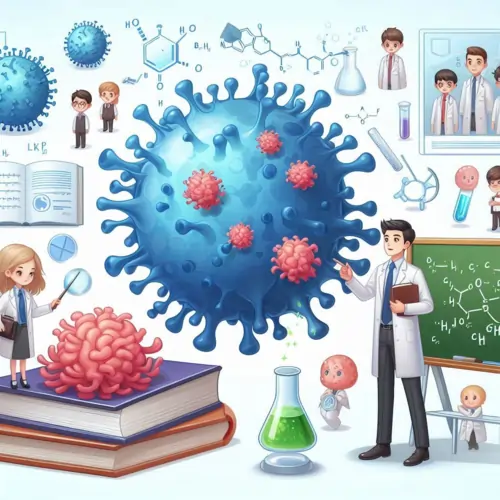Unraveling Phylogenetic Trees, Taxonomic Classification, and Evolutionary Relationships

Understanding phylogeny and systematics is crucial for any student pursuing studies in biology, particularly those focusing on evolutionary biology. Phylogeny refers to the evolutionary history and relationships among or within groups of organisms, while systematics is the scientific study of how living and extinct organisms are related. Below, we’ll walk you through how to tackle questions related to these topics, provide explanations, and offer tips on understanding the concepts better. This blog will be beneficial for those students also who want to take assistance for their taxonomy assignment.
Determining Phylogeny
Phylogeny is primarily determined through the study of DNA sequences. By comparing the genetic material of different organisms, scientists can infer their evolutionary relationships. DNA mutations accumulate over time, and these genetic differences can be used to construct phylogenetic trees. Understanding that DNA is a fundamental tool in determining phylogeny helps students grasp the intricate connections between organisms.

The Role of Systematics
Systematics involves organizing and classifying organisms based on their evolutionary relationships. This field helps scientists understand the diversity of life and the relationships between different organisms. By focusing on systematics, students learn the importance of organizing biological diversity in a way that reflects evolutionary history.
Taxonomic Classification System
In the taxonomic classification system, the hierarchy from broad to specific is: domain, kingdom, phylum, class, order, family, genus, species, and subspecies. Recognizing that subspecies are the most specific category of classification is essential for students when categorizing organisms accurately. This system helps in understanding the levels of organization in biological classification and the relationships among different groups.
Phylogenetic Trees
On a phylogenetic tree, sister taxa refer to groups of organisms that share an immediate common ancestor, making them each other’s closest relatives. Understanding the structure of phylogenetic trees and the concept of sister taxa aids students in visualizing the evolutionary relationships among different lineages.
Understanding Analogies
Analogous traits arise when different species face similar environmental pressures and develop similar adaptations, despite not sharing a recent common ancestor. This is a result of convergent evolution. Recognizing that analogies are derived by similar environmental constraints helps students differentiate between traits that arise from shared ancestry and those that result from similar selection pressures.
Applying Cladistics
Cladistics is a method of classifying organisms based on common ancestry. Scientists use homologous traits, which are inherited from a common ancestor, to determine evolutionary relationships and construct cladograms. Understanding the use of homologous traits in cladistics allows students to appreciate the methods used to trace evolutionary history.
Clade Characteristics
Organisms in the same clade share a common ancestor. This grouping reflects their evolutionary history and relationships. By recognizing that clades represent groups of organisms evolved from a shared ancestor, students can better understand the branching patterns in evolutionary trees.
Concept of Maximum Parsimony
Maximum parsimony is a principle that suggests the simplest explanation, or the one with the least number of steps, is preferred when constructing phylogenetic trees. This helps in creating the most likely evolutionary pathways. Applying the concept of maximum parsimony enables students to construct more accurate and straightforward phylogenetic trees.
Horizontal Gene Transfer
Horizontal gene transfer involves the transfer of genes between organisms in a manner other than traditional reproduction, significantly affecting the genetic makeup and evolution of the recipient organisms. Understanding this concept helps students grasp how genetic material can be exchanged across different species, influencing their evolution.
Gene Transfer Agents
Gene transfer agents are virus-like particles produced by some bacteria and archaea that can transfer genetic material between cells, playing a significant role in horizontal gene transfer. Recognizing the role of gene transfer agents in horizontal gene transfer provides students with insight into the mechanisms of genetic exchange in microorganisms.
Trunk of Phylogenetic Tree
The trunk of a phylogenetic tree represents the most recent common ancestor from which all the organisms in the tree are descended. Understanding this helps students visualize the point of origin for different evolutionary branches and the common ancestry of various groups.
Phylogenetic Models
The ring of life model suggests that the three domains of life (Bacteria, Archaea, and Eukaryota) emerged from a communal pool of primitive prokaryotes, highlighting the significance of horizontal gene transfer in early evolution. Recognizing different phylogenetic models helps students appreciate the complexity of evolutionary relationships and the various hypotheses proposed by scientists.
Critical Thinking in Phylogeny and Systematics
- Phylogenetic Tree and Time: A phylogenetic tree depicts evolutionary relationships and can show the relative timing of divergences among lineages. The branches indicate the passage of time from a common ancestor.
- Close Relationships on Phylogenetic Tree: Organisms that appear closely related on a phylogenetic tree may not be closely related due to convergent evolution or horizontal gene transfer, which can result in similar traits independently arising in unrelated lineages.
- Taxonomic Classification System Levels: The levels, from broad to specific, are: domain, kingdom, phylum, class, order, family, genus, species, and subspecies.
- Homologous or Analogous Traits: Dolphins and fish have similar body shapes due to analogous traits, which arise from similar environmental pressures rather than a shared evolutionary history.
- Importance of Homologous vs. Analogous Characteristics: Distinguishing between homologous and analogous traits is crucial for accurately reconstructing evolutionary relationships and building phylogenetic trees.
- Maximum Parsimony: Maximum parsimony is a method that seeks the simplest evolutionary pathway with the fewest changes, minimizing the number of evolutionary steps to explain the observed traits.
- Evolution of Eukaryotic Cells: Eukaryotic cells may have evolved through mechanisms such as endosymbiosis, where one cell engulfs another; horizontal gene transfer; and genome fusion, where the genetic material from different organisms combines.
- Aphid Color Change: Aphids acquired the ability to change color through horizontal gene transfer, where they incorporated genes from fungi into their own genomes, allowing them to produce pigments for camouflage.
Tips for Students
- Understand Key Concepts: Focus on grasping the core concepts of phylogeny and systematics, such as the importance of DNA in determining evolutionary relationships and the distinction between homologous and analogous traits.
- Practice with Examples: Use phylogenetic trees and taxonomic classification exercises to apply your knowledge practically.
- Engage in Discussions: Join study groups or online forums to discuss these topics with peers, which can provide new insights and enhance your understanding.
Conclusion
Mastering the concepts of phylogeny and systematics is essential for any biology student, particularly those focused on evolutionary assignment. By understanding how DNA is used to determine evolutionary relationships, the role of systematics in classifying organisms, and the significance of distinguishing between homologous and analogous traits, students can better comprehend the complexity of life's history. Utilizing tools like phylogenetic trees and adhering to principles such as maximum parsimony helps in accurately reconstructing evolutionary pathways.
Approaching your biology assignment with a clear grasp of these concepts, practicing with examples, and utilizing available resources will enhance your ability to solve related questions effectively. Engaging in discussions with peers and actively participating in study groups can further solidify your understanding. By following these strategies, you can tackle phylogeny and systematics assignments with confidence and precision, paving the way for academic success in your biological studies.